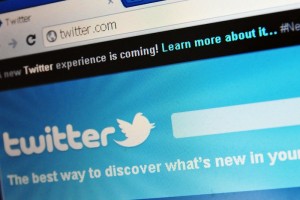 A client just emailed me the kiss of death in writing (no guts to call), “We've given it (PR) a year, and we're simply not seeing the ROI.” Undoubtedly it’s my fault for not adequately managing their expectations, but when a client expects to see a straight line from media coverage to their bottom line, there’s a problematic disconnect.
A client just emailed me the kiss of death in writing (no guts to call), “We've given it (PR) a year, and we're simply not seeing the ROI.” Undoubtedly it’s my fault for not adequately managing their expectations, but when a client expects to see a straight line from media coverage to their bottom line, there’s a problematic disconnect.

Public relations has always resisted ROI metrics, even in this day of big data. And that’s because PR is about heightening company/product/executive awareness and promoting a positive reputation. How does one measure buzz in a bottle?
In my two-plus decades managing campaigns for marketing services companies, I’ve learned that thought leadership media coverage does not equate directly to ROI — making the cash machine ring. But to borrow a phrase from Joni Mitchell’s “Big Yellow Taxi,” “Don’t it always seem to go that you don’t know what you’ve got ‘til it’s gone.”
The ‘measure’ most widely used to determine PR success has long been the number, frequency and breadth of media coverage (clippings, electronic and print). But PR success cannot be accurately gauged strictly by clipping volume alone — though it is a grand start. Strategically positioning a company as a leader is often a key PR goal. Let’s say that after a year’s effort your client has won several prestigious industry awards (based on product quality), earned glowing reviews (editors’ decisions — you brought it to their attention), has secured an ongoing column in a leading publication (your work), been invited to speak at conferences (your work, again), and received xxx column inches (PR result) in articles featuring the two or three leading competitors in your sector.
No Mathematical Formula:
Considering these elements to be of value to the brand, no mathematical formula to connect PR directly with the short and longer-term business impact on brand currently exists. Truth is, the ROI of PR is very different from that of advertising, but it is no less valuable.
Let’s look at what effective PR does offer clients. PR is a powerful marketing tool that provides several distinct benefits, which the client must then “bake” into their marketing/sales programs. Even so, it’s important to determine what can and can’t be quantified and how to assess intangible and tangible ROI in demonstrating the value of PR.
Media Endorsement:
Whether your company is quoted, profiled or has executive bylined columns published in influential media outlets, the endorsement of media is of great, but indeterminate, value. I will not put a dollar sign against a recent two-page spread we ghost-authored for an industrial design firm client that appeared in the summer issue of Innovation magazine (check their ad rates if you require a dollars-to-value conversion) that details one of their most profitable innovation services. Or the resigning client, which was quoted in June as the ‘industry expert’ in USA Today and the Los Angeles Times, among dozens of ‘lesser’ media coverage, which means they received media exposure and their competitors did not.
Publicity as Marketing Fodder:
Now that these clients have published stories in hand, is that the end of the day? Or do they put this material to work in their marketing sales efforts? (Beyond posting them to the company website.) Too few clients understand the long-term value of integrating publicity with marketing, such as outbound emails, ‘old-fashioned’ mail campaigns, social media, new business presentations, trade shows or speech distribution.
Now that we have some idea as to what publicity offers, and how to capitalize on it, let’s review the impact PR delivers.
PR Impact
Basically, there are two types: PR that prompts direct actions and PR that affects change in audience perceptions. The first can be measured in the short term; the second can only be gauged over the long-haul.
Short-term
- How many calls, emails, web visits, etc., resulted from a specific PR initiative?
- How your sales team handles these incoming leads is a separate topic, not to be equated with PR.
Long-term
- The impact on company reputation, brand equity or leadership position. This takes time and is about building momentum. The best way of measuring success is perhaps querying analysts and surveying customers and prospects, if budget allows.
The best metric is to determine the relationship of PR to market penetration over time, share, sales and profitability. The contribution of PR cannot be isolated and quantified as it relates to the direct impact on these business objectives. Rather the most efficacious view of PR is to see it as one tool in achieving these objectives.
Smart clients keep their marketing toolboxes well-stocked with an array of equipment. Public relations should always be included.









